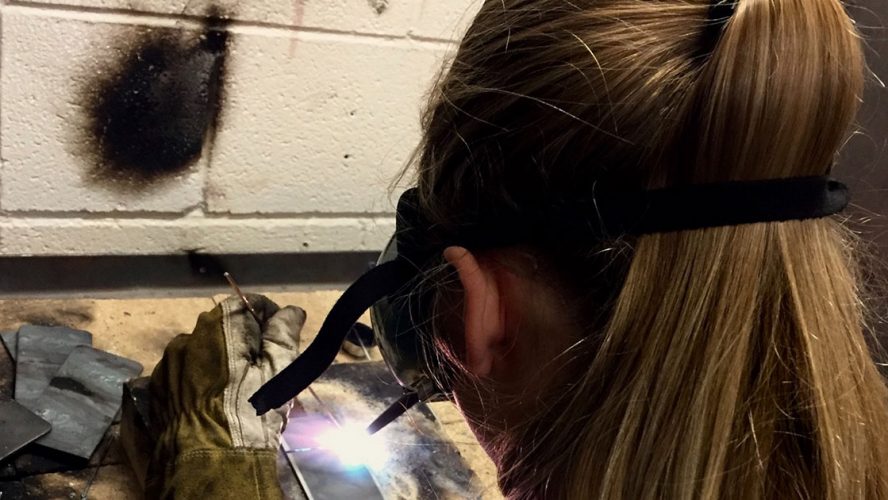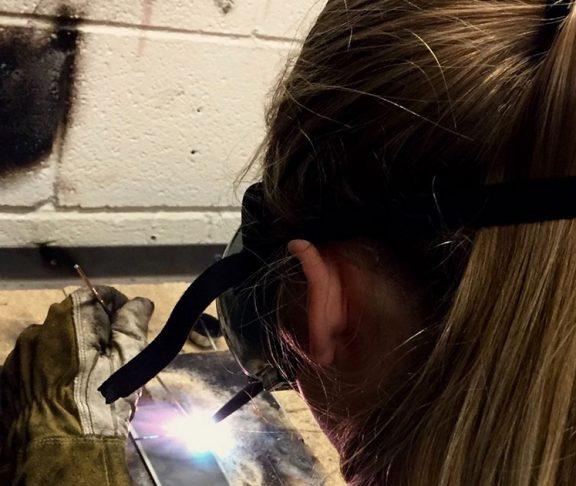When a woman graduates from welding school, the only uncertainty she may have is which job offer to accept. Despite common misconceptions to the contrary, welding can be a great career for women, for a number of reasons.
Why women?
There is currently a huge demand for welding personnel, and women fit into the picture well because they are typically fast learners, manually dexterous and reliable employees on the job. The demand comes from the fact that many welding personnel who have built their skills over a lifetime are presently retiring, and there is a need to replace them. Combine this with the present and strong need to build and refurbish U.S. national infrastructure, and the opportunities become obvious.
Welding provides relatively high average pay, and there is typically little or no gap between male and female salaries in this field. According to federal statistics, the average wage for welders, cutters, solderers and brazers tops $40,000 a year, and pay can go much higher in certain applications for highly skilled workers.
Women proved their ability to handle tough construction and manufacturing jobs in filling labor shortages during World War II. Now, with the need for skilled welders again at a premium, many employers are specifically seeking women as a means of creating gender diversity in the workplace.
Concerned about working conditions? The notion that welding is “dark, dirty and dangerous” is a proven myth, and many welding jobs are now undertaken in clean and pleasant workplace environments. In fact, there are tremendous opportunities in manufacturing and construction, and current jobs in this sector have greater demand than ever for complex skillsets. The result is a very favorable environment for welders and many other types of manufacturing workers entering the trade. Of course, greater skill needed for modern jobs typically means higher wages and improved working conditions. In addition to increasing wages, the demand for higher skills also improves job security.
Teaching the trade
So how does one get the training to qualify for premium welding jobs? There are many dedicated welding schools throughout the United States, and welding and technology programs are growing in traditional colleges and other post-secondary education institutions. A fast search on the internet should reveal many training programs in a given area. When it comes to paying for welding-related education, the American Welding Society (AWS) offers a variety of scholarships through the AWS Foundation to help recipients pursue their career goals. In the past 25 years, AWS Foundation scholarships have been provided to more than 5,000 students, totaling well above $6 million.
According to the American Welding Society, only about 5 percent of present welding personnel are female, so there is ample opportunity to join the field. One approach to encouraging young women to develop welding skills is a series of welding summer camps for girls throughout North America. As described in a recent AWS Welding Journal article, the camps are based on the premise that it is unreasonable to let half the working population believe that welding and other manufacturing jobs are not for them.
More and more, women are being recognized as a big part of the solution to the skills gap. In Oshkosh, Wisconsin, Fox Valley Technical College invites high school girls into its science, fabrication and welding labs for summer camp. Called “Girls in the Shop,” the program focuses on welding, as well as other applications in STEM fields. In Mobile County, Alabama, a construction camp program for girls is offered to eighth and ninth-graders for a week each summer to teach them the basics of carpentry, welding, pipefitting and more. In Canada, the Canadian Welding Association Foundation offers “Mind Over Metal” welding camps across the country to expose young people to welding.
AWS, in conjunction with The Lincoln Electric Company, has taken a mobile approach to exposing the public to welding by campaigning a Careers in Welding tractor trailer across North America. For several years, the trailer has visited schools, fairs and conventions to give people a chance to live the welding experience by operating “virtual” welding machines.
Any way you look at it, the future looks bright for young people who are considering entering the welding field. And, as mentioned, this is especially true for non-traditional welding job candidates, such as women.


